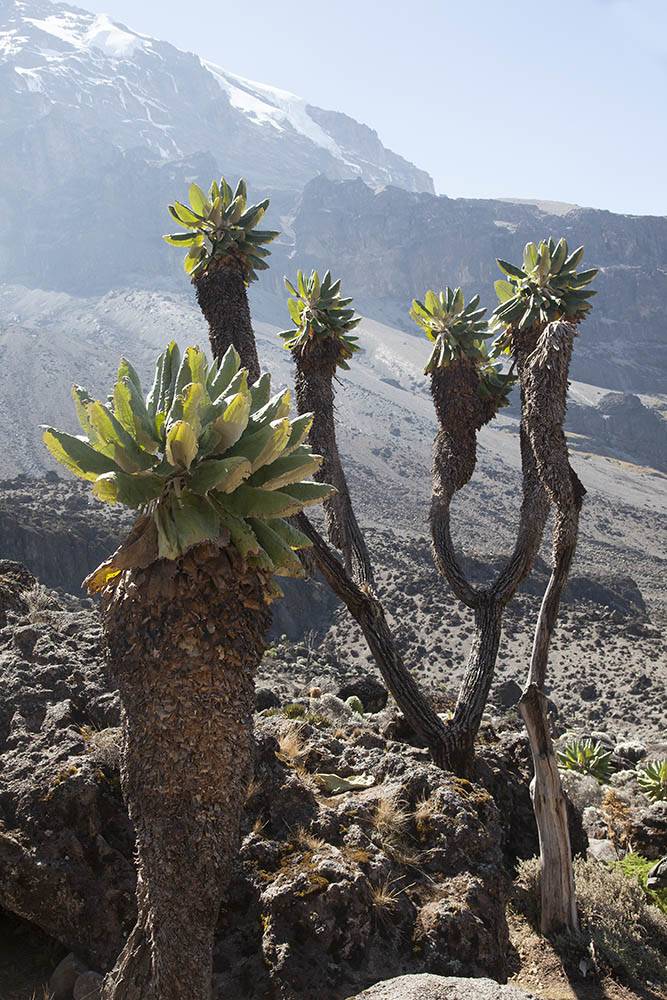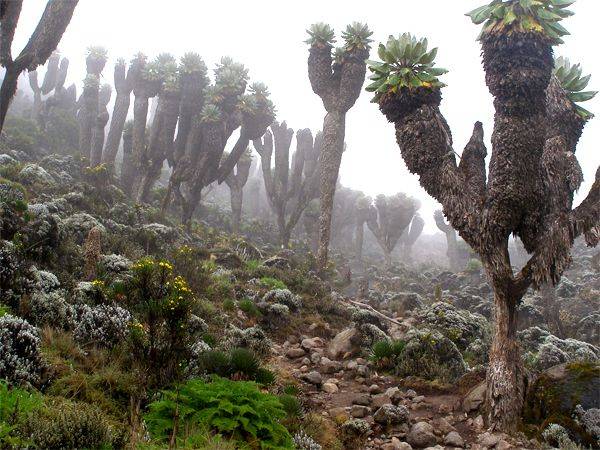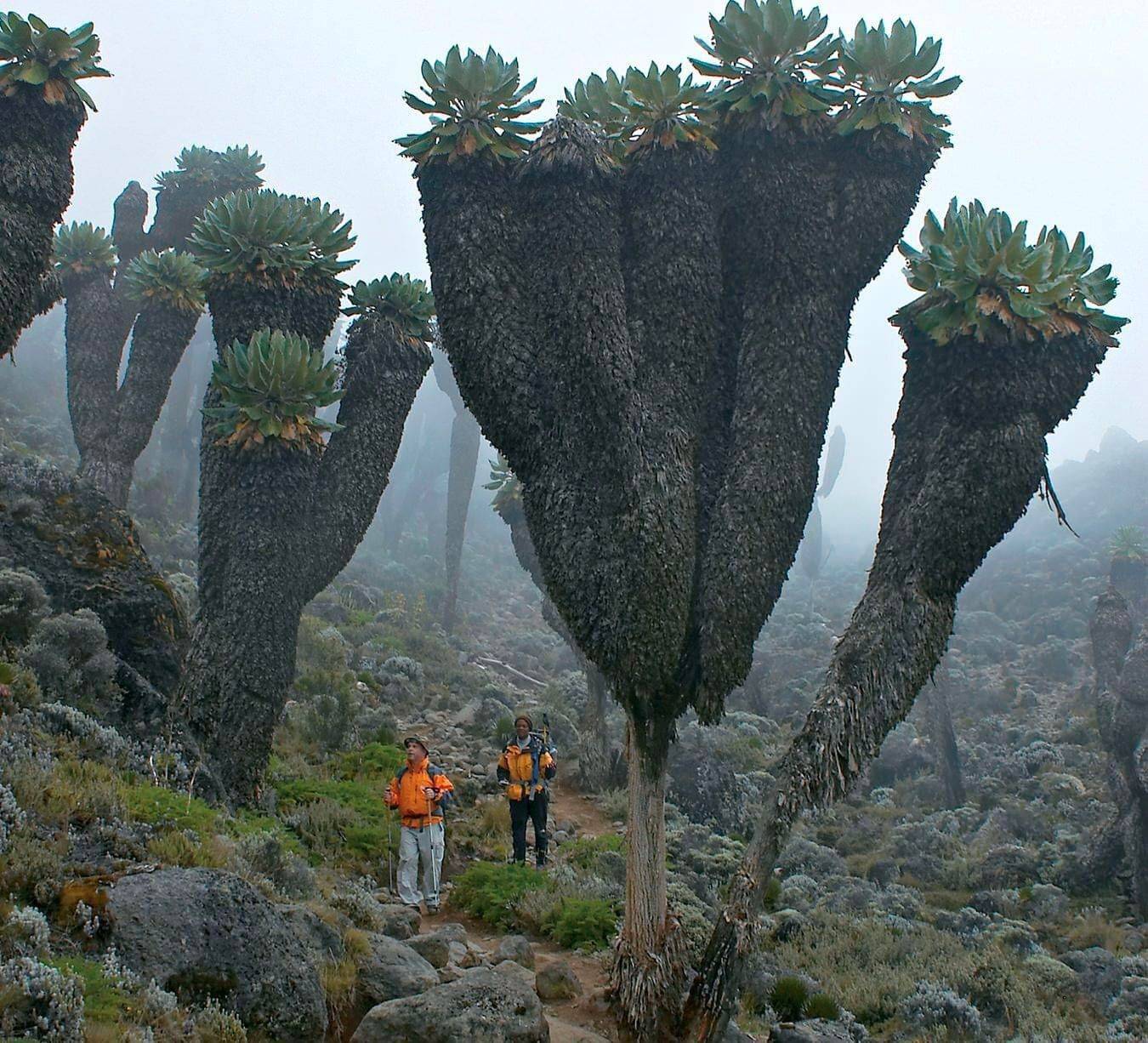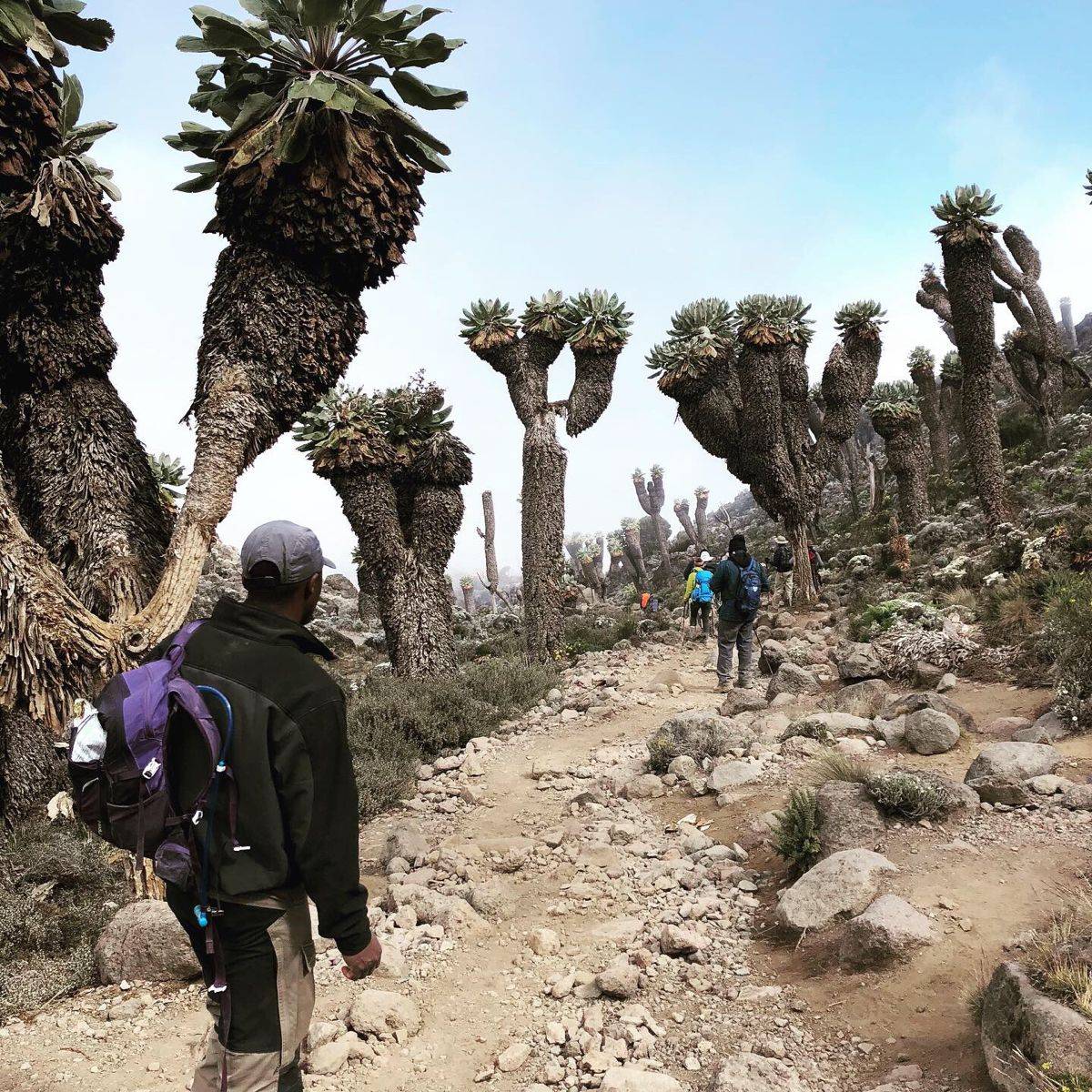Found only on Mount Kilimanjaro in Tanzania, these prehistoric plants look like a cross between a burned-up cactus and a pineapple, and can reach a height of 30 feet (9 meters). Mount Kilimanjora is an extinct volcano located at an altitude of 5,895 meters above sea level, located within the Kilimanjaro National Park covering an area of 75,575 hectares. With its snow-capped peak, Kilimanjaro is an extraordinary natural beauty that stands alone above the surrounding plains overlooking the savannah. It is the highest mountain in Africa and is home to rare species that are not found anywhere due to its isolated environmental conditions. It contains mammals, birds and plants that are in danger of extinction. It also hosts a large number of species that have differentiated in the evolutionary process. For all these reasons, its unique nature was declared as a World Natural Heritage by UNESCO in 1987.

As the highest mountain in Africa, Kilimanjaro itself is pretty outstanding. But as a free-standing mountain whose climate zones become progressively less like the ground-level landscape the further you ascend, Kilimanjaro is especially remarkable as an incubator for isolated, mutated, or rare species found almost nowhere else.

Mount Kilimanjaro in northern Tanzania attracts 40,000 hikers each year. While most hikers have a strong determination to climb to the top, many also lack knowledge about the risks of climbing to high altitude. Mount Kilimanjaro has a high risk of developing Acute mountain sickness (AMS), symptomatic high-altitude cerebral edema (HACE). Therefore, tour agencies should inform the hikers before visiting this natural wonder and say that they should be careful. In an emergency, there are no medical facilities on the mountain to intervene, especially for these diseases.










